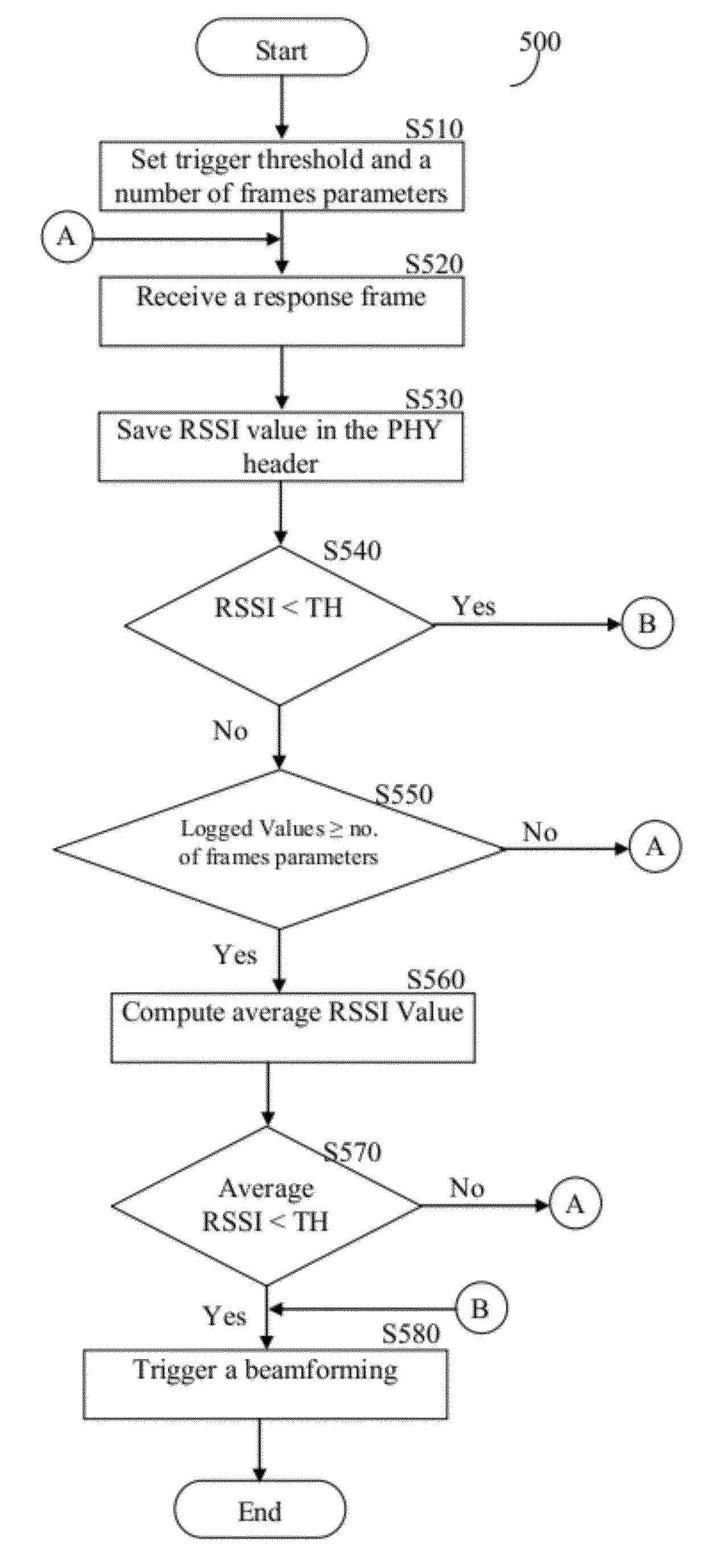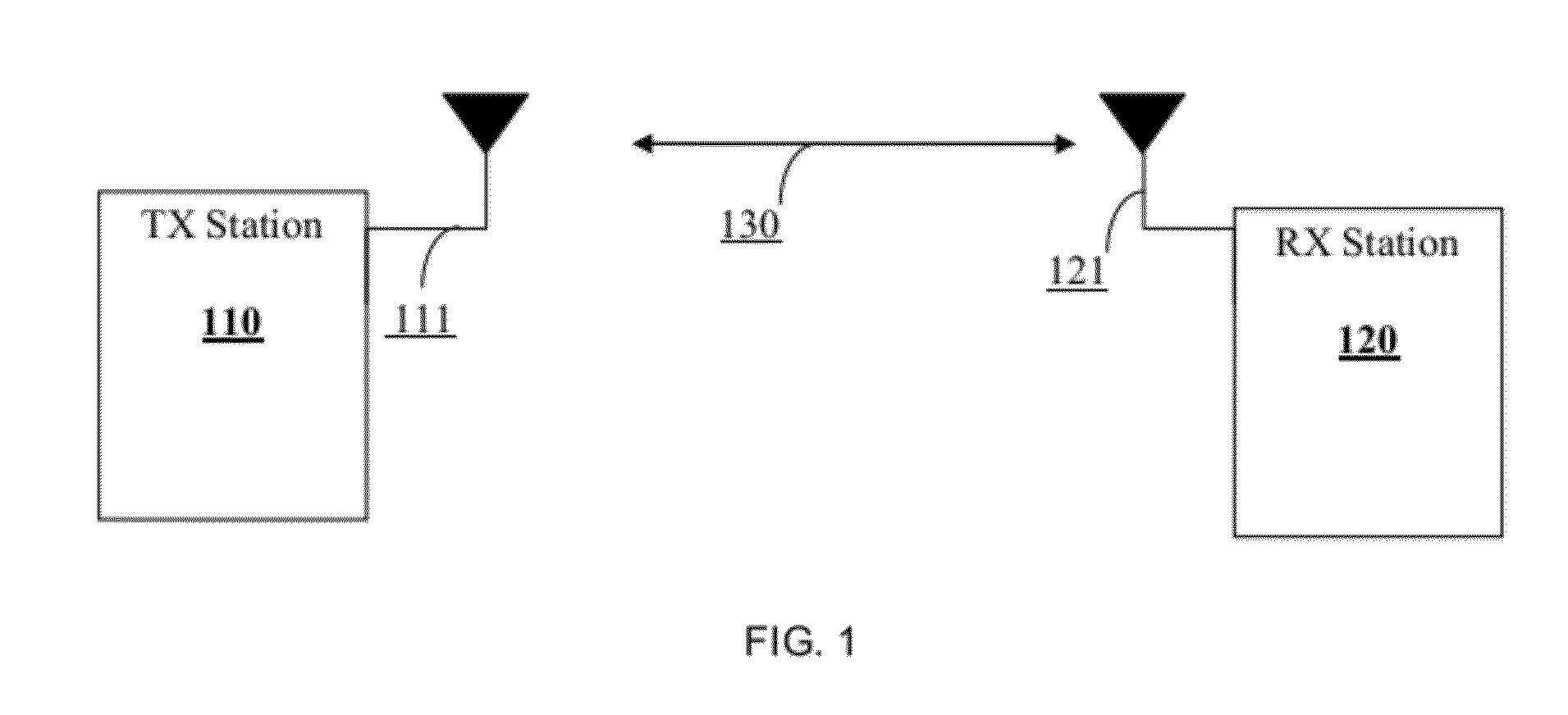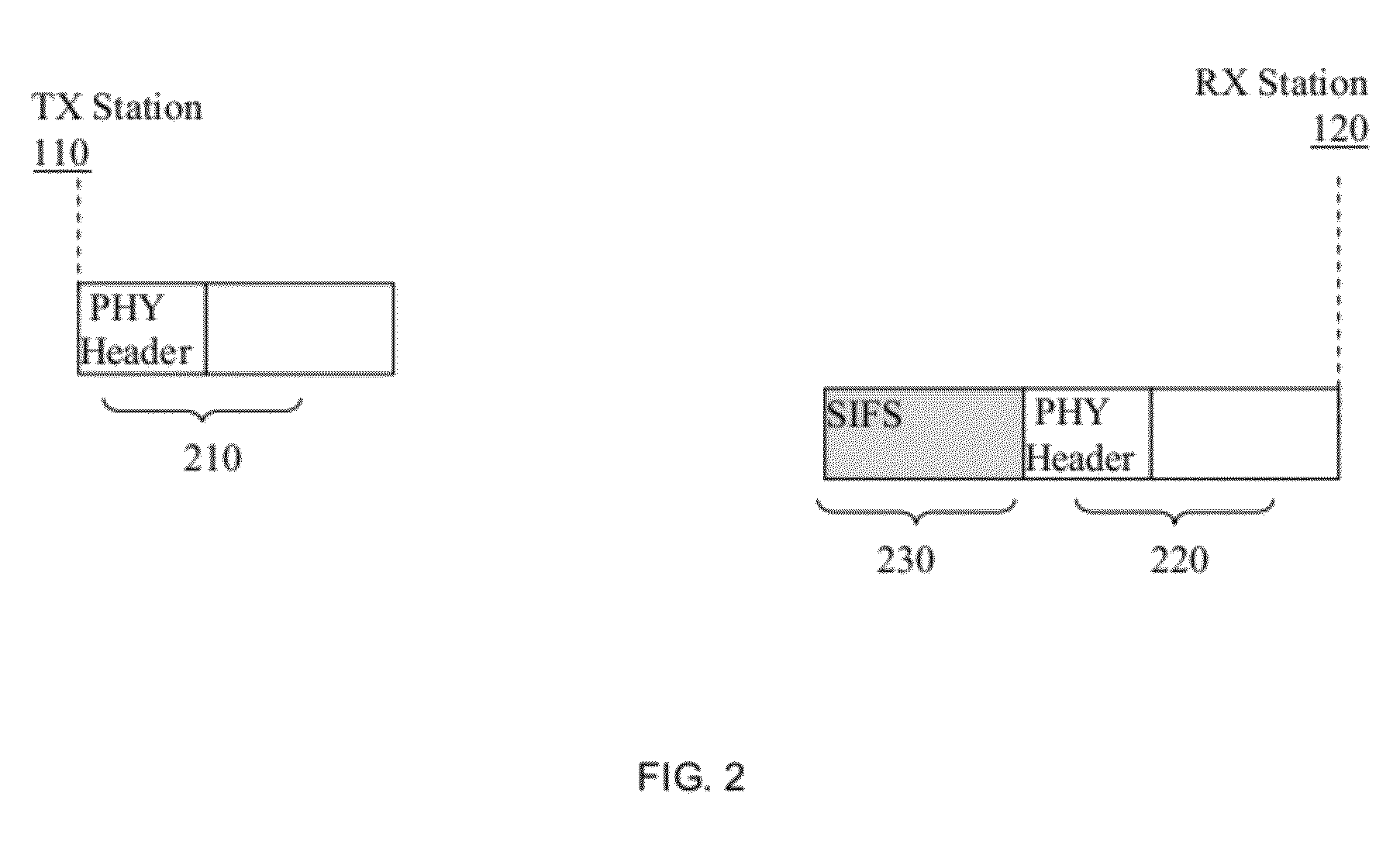Techniques for minimizing the beam forming time in wireless local area networks
a technology of local area networks and beam forming time, applied in data switching networks, frequency-division multiplexes, instruments, etc., to achieve the effect of reducing the beam forming tim
- Summary
- Abstract
- Description
- Claims
- Application Information
AI Technical Summary
Benefits of technology
Problems solved by technology
Method used
Image
Examples
Embodiment Construction
[0019]The embodiments disclosed are only examples of the many possible advantageous uses and implementations of the innovative teachings presented herein. In general, statements made in the specification of the present application do not necessarily limit any of the various claimed inventions. Moreover, some statements may apply to some inventive features but not to others. In general, unless otherwise indicated, singular elements may be in plural and vice versa with no loss of generality. In the drawings, like numerals refer to like parts through several views.
[0020]FIG. 1 is an exemplary diagram utilized to describe the techniques for reducing the beamforming time according to certain embodiments of the invention. Shown in FIG. 1 is a first wireless station 110 and a second wireless station 120 communicating over a wireless medium. Each of the wireless stations 110 and 120 includes a directional antenna 111 and 121 capable of performing a beamforming process, for example, as descr...
PUM
 Login to View More
Login to View More Abstract
Description
Claims
Application Information
 Login to View More
Login to View More - R&D
- Intellectual Property
- Life Sciences
- Materials
- Tech Scout
- Unparalleled Data Quality
- Higher Quality Content
- 60% Fewer Hallucinations
Browse by: Latest US Patents, China's latest patents, Technical Efficacy Thesaurus, Application Domain, Technology Topic, Popular Technical Reports.
© 2025 PatSnap. All rights reserved.Legal|Privacy policy|Modern Slavery Act Transparency Statement|Sitemap|About US| Contact US: help@patsnap.com



